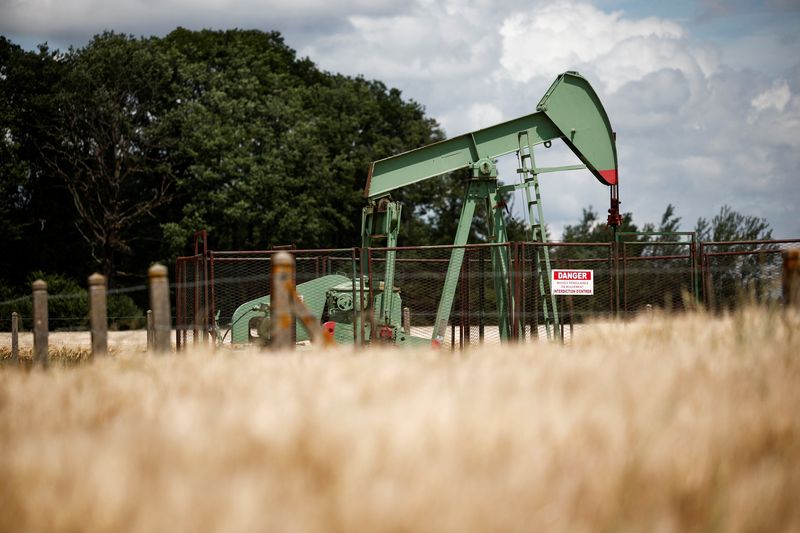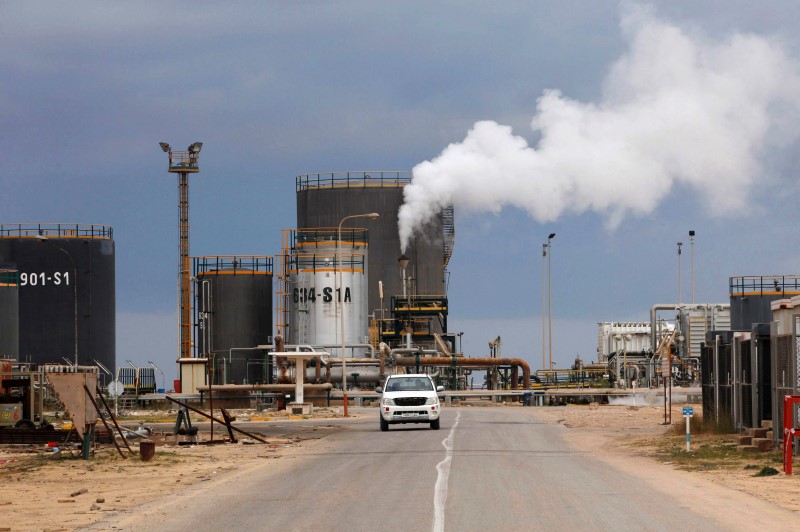By Georgina McCartney
HOUSTON (Reuters) -Oil prices fell on Friday as investors weighed expectations of a rise in OPEC+ supply from October, alongside fading hopes for a big U.S. interest rate cut next month, following data showing strong consumer spending.
futures for October delivery, which expire Friday, closed $1.14 lower, or 1.43%, at $78.80 a barrel, down 0.3% for the week and 2.4% for the month.
U.S. West Texas Intermediate crude futures fell $2.36, or 3.11%, to $73.55, down 1.7% on the week and down 3.6% in August.
The Organization of the Petroleum Exporting Countries and allies, known as OPEC+, will press ahead with a planned increase in oil production from October, as Libyan power cuts and promised cuts by some members to offset overproduction counter the impact of sluggish demand, six sources from the producer group told Reuters.
“OPEC+ talking about continuing to unwind production cuts was the headline that really sunk us today,” said Phil Flynn, analyst at Price Futures Group.
Meanwhile, investors reacted to new data showing U.S. consumer spending rose solidly in July, signaling the economy remained on firmer footing as the third quarter began, and argued against a half-percentage point rate cut by the Federal Reserve. Reserve next month.
Lower rates can stimulate economic growth and demand for oil.
“That modest increase in inflation could effectively confirm that we are only getting a quarter of a percentage point off and those hoping for half that will have to wait,” said Flynn of Price Futures Group.
Elsewhere, Libya’s National Oil Corporation said recent oilfield closures have led to the loss of around 63% of the country’s total oil production, as a conflict between rival eastern and western factions continues.
According to consultancy Rapidan Energy Group, production losses could amount to between 900,000 and 1 million barrels per day (bpd) and last for several weeks.
The eastern Libya-based government announced the closure of all oil fields on Monday, halting production and exports and sending oil to a near two-week high on August 26.
“It is interesting to see that the halt in Libyan production has such an impact on market prices one day and is completely ignored the next,” said Tim Snyder, chief economist at Matador Economics.
“It seems to me that there is a lot of negative inertia in the market right now, driving prices down,” Snyder added.
Iraqi supplies are also expected to shrink after the country’s production exceeded its OPEC+ quota, a source with direct knowledge of the matter told Reuters on Thursday.

Iraq plans to cut its oil production to between 3.85 million and 3.9 million barrels per day next month.
In the US, the number of active rigs remained unchanged this week at 483, but rose by one in August, Baker Hughes said.


